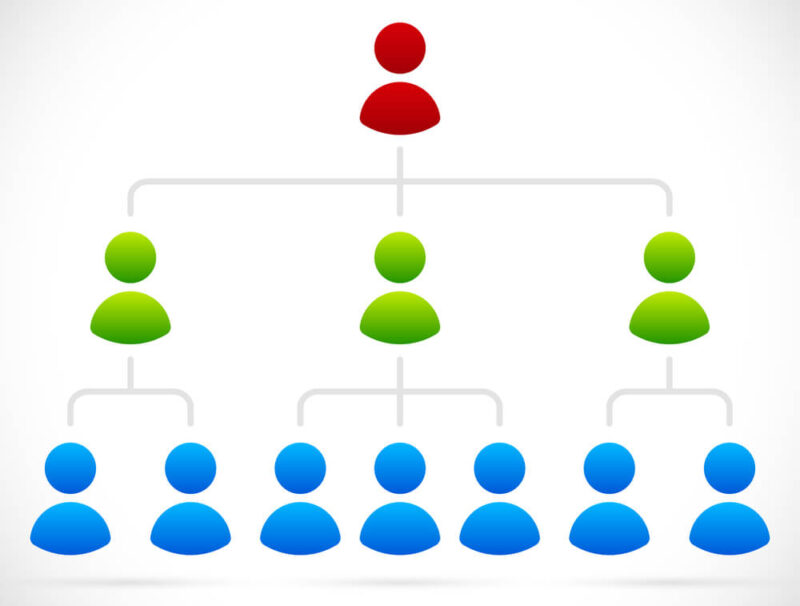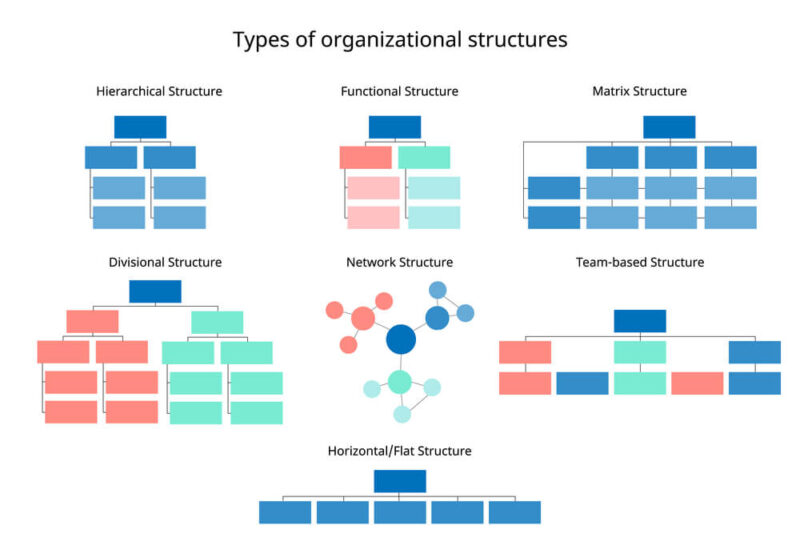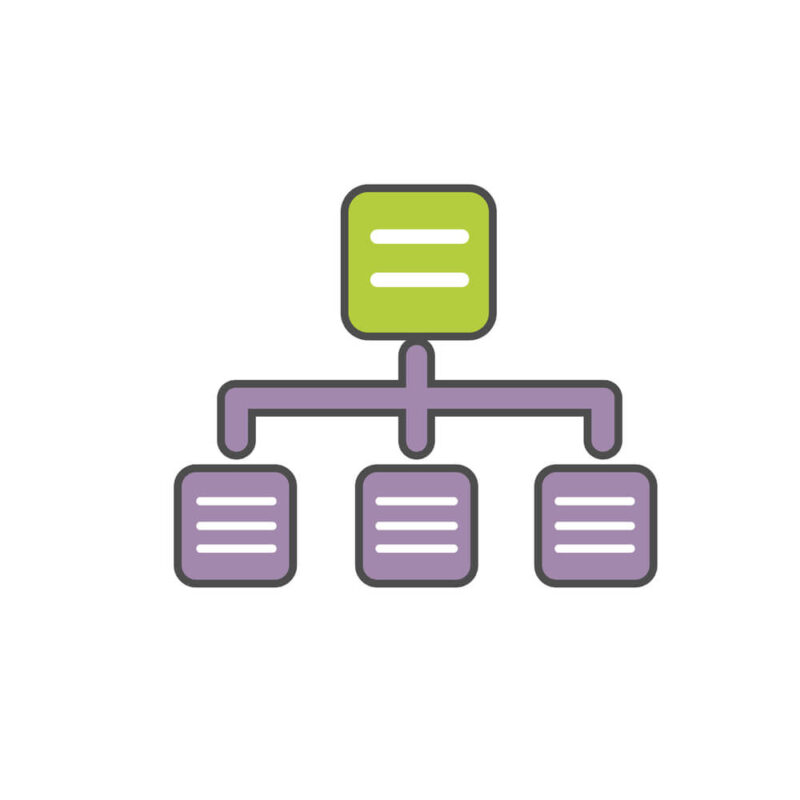4 Types of Organizational Structure Explained in 2025: Choosing the Best Structure For Your Organization
Business owners and managers spend lots of time searching for the perfect employees for their business, but without a solid plan and an organizational structure that can support them, it could be for nothing. In this guide, we’ll look at the 4 types of organizational structure.
Key Takeaways: 4 Types of Organizational Structure
- Before implementing an organizational structure, you must understand every aspect of your business.
- Organizational structures can help improve the flow of information, team collaboration, productivity, trust and employee happiness.
- There are organizational structures for businesses that like using multiple levels of management and for those that prefer to let teams operate more autonomously.
No matter how big (or small) an organization is, it will likely fail without structure. Organizational structure is what helps companies create defined roles and responsibilities, rules, workflows and more. This all sounds great, but how do you build and implement structure, and what are the 4 types of organizational structure?
In this guide, we’ll help you learn about four common organizational structures, their purpose, the benefits they can bring to your own company, and how structure and organizational charts can help increase teamwork, morale, and productivity. By the end of this guide, you’ll know which is the right organizational structure for your company.
Organizational Structure Charts – What You Need To Know
There are many types of organizational structure charts, most of which take on specific shapes. Think about organizational charts you have seen in your career. Chances are most have seen charts that look like pyramids, with the company CEO sitting at the top and senior and middle managers below, but did you know there are other organizational structure outlines?
Before we get into the four most common types of organizational structure, we need to explain what centralized and decentralized, hierarchical and circular, and flat and vertical structures are, as there are some significant differences between them.
Avoid Costly Project Management Mistakes – Get Free Tips Today!

- Discover 10 fundamentals of project management
- Understand step-by-step plans for PM execution
- Learn tips to avoid 5 common mistakes by beginners

to team members at the bottom of the structure.
Centralized and Decentralized Organizational Charts
A centralized organizational structure features centralized leadership, with either one leader or a smaller group of managers who call the shots. This structure has an obvious chain of command and positions with specific responsibilities.
A decentralized organizational structure has a less obvious chain of command and allows middle managers like a scrum master, project managers (check out our roundup of the best project management software) or teams who are far from senior management to make important decisions, which helps teams become agile and respond to new demands efficiently.
Flat and Vertical Organizational Charts
In a flat organizational structure, team members will often find few managers between them and the top of the management structure. A flat organizational structure aims to eliminate middle managers and give employees more decision-making power. A flat org structure is often used in small businesses.
Vertical structures are rigid and are considered top-down structures. With top-down structures, orders come from the top of the chain and work their way down. Information flows from the owner or CEO to directors and senior managers. The data continues to trickle down to middle management and then teams. Every person in the structure is managed by those above them.

Hierarchical and Circular Organizational Charts
A hierarchical structure uses a top-down approach. Commands flow from the top down to the next level of managers. The number of managers on each level is usually wider than the group above, giving it a pyramid shape. This structure shows clear communication paths, defines roles and how much responsibility they have, and indicates developmental pathways.
A circular structure sees the CEO occupy a central ring. The center ring is surrounded by outer rings filled with senior and middle managers. The lowest staff occupy the outermost rings. This structure operates like a traditional hierarchy but gives the appearance that high-ranking managers are more accessible and that communication across the board is easier.
4 Types of Organizational Structure
As mentioned, there are four common types of organizational structure. All of the organizational structures work differently and have pros and cons. Below, we’ll briefly discuss their use cases, benefits and how they might hinder a business.
1. Functional Structure
A functional organizational structure is divided into various departments covering different business aspects. Each department is a functional team that has a leader or department owner. The teams in each department report up to their manager if there are issues or concerns. The department leads then go up the chain to report to their respective managers.

The functional structure is an example of a top-down hierarchical organizational chart. It is also known as a bureaucratic organizational structure. This method is common in small to medium-sized businesses. Pros include knowledgeable departments that promote teamwork. The main disadvantage of departmentalization is a lack of cross-functional teams.
2. Divisional Structure
It is often large companies and enterprises with many different product lines that adopt centralized divisional organization structures. Take an electronics company, for example. The company creates televisions, kitchen appliances, phones and more, but each department is operated as its own division or business and has its own team-based structure.
Each division of the electronics conglomerate will have a president who runs that segment of the business. Under the president will be senior and mid-level managers, and then various teams and individuals who design and create the products that report to the division leader. Each division head then reports back to the company CEO or chairperson.

The biggest pro of the divisional approach is that each department operates individually but uses the same employee structure, which gives flexibility when attempting to cater to its customer base. The biggest con is that there is often little collaboration between different divisions, which can make sections of a company feel isolated.
3. Flatarchy
A flatarchy is a hybrid organizational structure that mixes hierarchical methods and a flat structure. In a flatarchy, you’ll find an executive sitting atop the organization, like in a hierarchy. If you remember, flat structures aim to remove middle management, so in a flatarchy, you’ll find a single manager or no manager at all between the top executive and every other employee.

they want to cut down on middle management.
A flatarchy is a decentralized structure and is often used by small businesses. As you can imagine, a small business using decentralized organizational structures doesn’t need many middle managers. Fewer managers means teams and individuals can work across departments, have more responsibilities and job functions, and make critical decisions.
This type of structure indicates a company is lean. Lean methods can help reduce waste and operating costs. Businesses that adopt a flatarchy can also expect improved communication and teams with an agile mindset. The biggest pitfall of a flatarchy is confusion stemming from a lack of leadership. If you’d like to learn more about Lean methods, check out our guide to project management methodologies.
4. Matrix Structure
A Matrix organizational structure is a little more complex than the other methods we have covered. In matrix structures, teams report to two managers instead of one. For example, a creative team would report to a functional marketing manager and a project manager who oversees projects.

over a department and a project manager.
Organizations that employ a matrix structure are highly flexible, champion collaboration and encourage direct communication. In a matrix structure, team members can learn new skills as they will be part of cross-functional teams. However, matrix structures can cause problems, including managerial conflicts and drawn-out decision-making processes.
What Are the Benefits of Organizational Structures?
Having a sound business operating structure that can help regulate operations, roles and responsibilities is necessary for businesses that want to grow and perform above expectations. Below, we’ll briefly cover a few of the benefits associated with organizational structures.
Better Collaboration and Communication
While every organizational structure is different, many of the discussed methods will improve communication and collaboration. With a clear organizational structure, employees know who to turn to when problems arise. An organizational structure also fosters collaboration across multiple departments, helps increase transparency and builds team trust.

Increased Productivity
Organizational structures outline job roles and responsibilities for everyone from senior management to middle managers, department managers and lower-level employees. This level of structure can help increase productivity because every team member knows what they should be doing and to whom they should report.

Scalable Operations
A business that expands will benefit from having an organizational structure that can be implemented into new offices or divisions. When the same organizational structure that brought success is implemented, business owners will know that every branch is operating in the same manner and that the same roles, responsibilities and rules are being used and followed.

when a business expands into new territories.
Better Pay Structure
A sound internal structure that lists all job roles and responsibilities can help companies incorporate pay structures that make sense and show clear career paths. Having a pay structure based on an organizational chart will help employees understand that those at the bottom of the chain will earn less than those who sit higher up in the company.
How to Choose an Organization Structure
You need to sit down and take time to figure out what type of organizational structure you want in your business. After all, it will affect the way that your business operates. You’ll need to take into consideration what your business is, the type of employees you have and the direction you want to take the business.
Do you want to be the one calling the shots, or do you trust your managers and employees to make decisions on your behalf? Do you want many managers and slower decision-making processes, or do you want to use a structure that promotes agile teams that can adapt to change and make business decisions on the fly?

The best way to choose an organizational structure is to look at your business and the services you’re offering. Talk with your clients and shareholders to understand their needs and discuss potential changes with the entire team to see what they’re comfortable with. With transparency and open communication, your team will be more likely to buy into the new structure.
Final Thoughts: Types of Organizational Structures
Organizational structures can help increase the flow of information. Business structures define jobs, roles, pay grades and responsibilities. Structures also show a clear chain of command and can increase communication, collaboration, accountability and productivity. It’s clear that there are many benefits to be reaped by implementing organizational structures.
Have you implemented an organizational structure in your business? Which structure did you choose and why? Have you ever changed from one structure to another or used an organizational hierarchy we haven’t mentioned here? Let us know in the comments, and as always, thanks for reading.
FAQ: 4 Types of Organizational Structure
An organizational structure paints a clear picture of where every team member fits into the team, what job roles and responsibilities are and who reports to whom.
The four main types of organizational structures are functional, divisional, flatarchy and matrix.
The five elements of an organizational structure are departmentation, delegation, the chain of command, span of control and job design.

